Let’s Get Started – Most Dangerous Instect Breed in All 50 States

Concept: Kelly Lynne
From venomous spiders hiding in your shoes to mosquitoes that attack in swarms, every U.S. state has its share of creepy-crawly nightmares. These insects don’t just annoy—they bite, sting, and destroy, turning peaceful days into unexpected chaos. Whether it’s a scorpion lurking in Arizona or a tick that makes you allergic to burgers, these bugs bring the drama. Here’s the ultimate roundup of the most dangerous insects in every state. Proceed with caution—you’ve been warned!
Alabama – Yellow Jackets
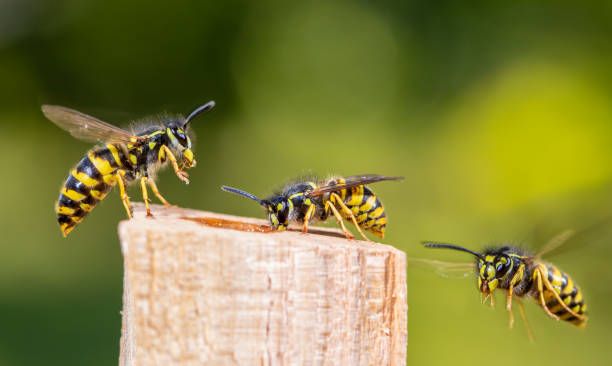
In Alabama, yellow jackets turn summer into a season of terror. These aggressive wasps deliver multiple stings and summon reinforcements with their pheromones. Accidentally disturb their underground nests, and you’ll face a swarm ready to chase you down. Their stings cause searing pain and, for some, life-threatening allergic reactions. One unlucky gardener barely escaped after being chased for 50 yards by an angry swarm. In Alabama, the buzzing isn’t just background noise—it’s a warning to run.
Alaska – Mosquito Swarms

Alaska’s mosquitoes don’t bite—they swarm. These tiny vampires attack in such overwhelming numbers that residents joke they’re the state bird. During summer, they form clouds thick enough to drive campers indoors. Their bites itch like crazy and sometimes carry the West Nile virus, making them more than just an annoyance. Locals have shared stories of horses and cattle collapsing under the sheer volume of bites. In Alaska, it’s not the bears you need to fear—it’s the bloodthirsty mosquitoes.
Arizona – Bark Scorpions
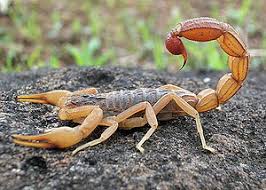
Arizona’s deserts are home to bark scorpions and venomous critters that hide in crevices, shoes, and even beds. Their sting isn’t just painful—it can cause muscle spasms, vomiting, and temporary paralysis. One family discovered a nest of these glowing horrors under their couch, turning movie night into a nightmare. Locals arm themselves with blacklights to spot these scorpions before they strike. In Arizona, the monsters under your bed might be real—and venomous.
Arkansas – Red Imported Fire Ants
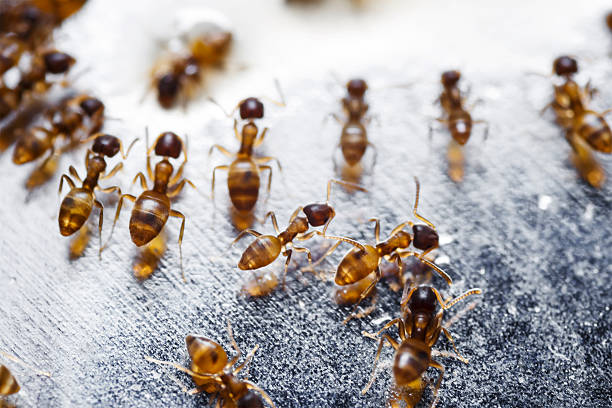
In Arkansas, red imported fire ants turn lawns into landmines. Accidentally step on a mound, and you’ll face a swarm delivering fiery stings that burn and blister. Their venom can cause allergic reactions, and their sheer numbers overwhelm their victims. Farmers have reported livestock succumbing to these relentless pests. One local described their encounter as “standing on hot coals.” In Arkansas, even the grass has a bite.
California – Africanized Bees

California is buzzing with danger thanks to Africanized bees, also called killer bees. Known for their aggression, these buzzing nightmares attack in swarms and chase their victims for up to a quarter mile. One unlucky hiker stumbled into a hive and suffered over 100 stings before finding safety. Unlike regular bees, these don’t need much provocation to turn deadly. In California, danger comes with wings—and a lot of stingers.
Colorado – Giant Water Bugs
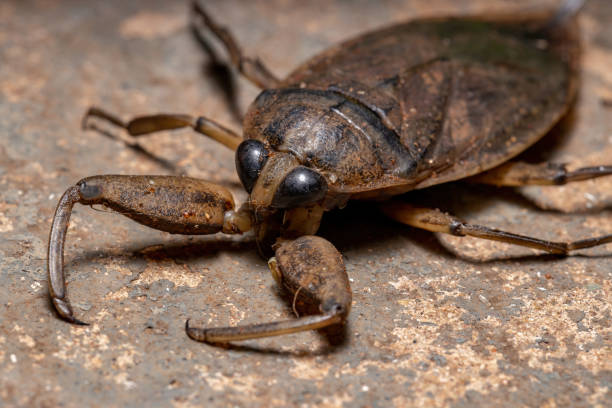
Colorado’s lakes hide a chilling secret: giant water bugs, also known as toe-biters. These aquatic hunters deliver a bite that feels like an electric shock. Fishermen often report these creatures latching onto fingers or toes, refusing to let go. Though not venomous, their bites cause painful swelling and lingering discomfort. One camper described them as “the monsters of shallow waters.” In Colorado, even the calmest waters can come with a painful surprise.
Connecticut – Deer Ticks

Connecticut’s forests are crawling with deer ticks, tiny parasites that spread Lyme disease with a single bite. These nearly invisible bugs latch on painlessly, making them hard to detect until the damage is done. Victims often suffer chronic fatigue, joint pain, and neurological issues. One hiker found over 30 ticks on their clothing after a single outing. In Connecticut, the biggest danger isn’t what you see—it’s what you don’t.
Florida – Mosquitoes
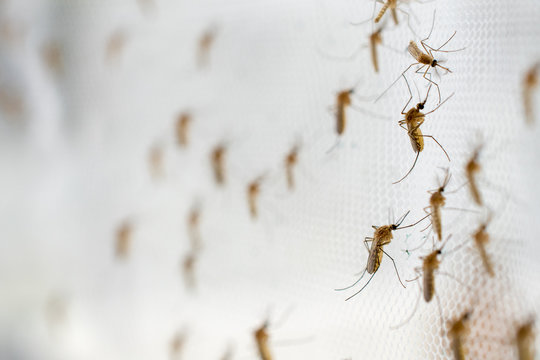
Adobe
Florida’s warm, humid climate is a paradise for mosquitoes—and a nightmare for everyone else. These flying bloodsuckers carry diseases like Zika, Dengue, and West Nile virus. Residents joke that bug spray is as essential as sunscreen, but even that might not save you. One family described being bitten over 50 times during a sunset beach stroll. In Florida, paradise comes with a buzz—and it’s not the relaxing.
Georgia – Cicada Killers
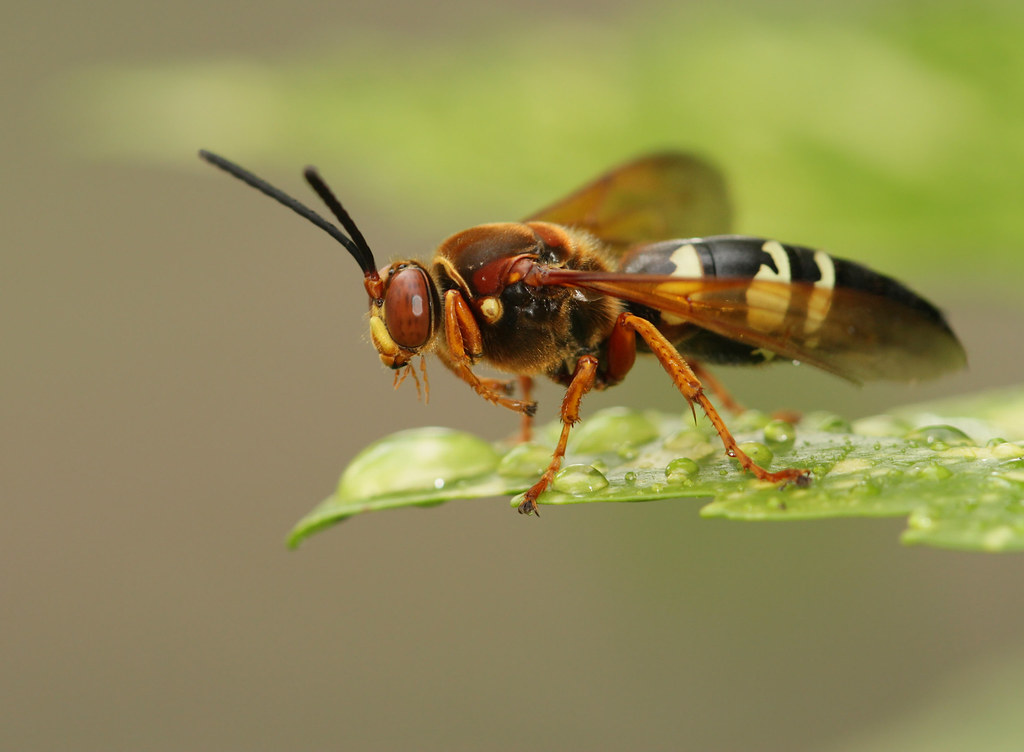
In Georgia, cicada killers make a dramatic entrance every summer. These giant wasps grow up to two inches long and have an eerie habit of dragging paralyzed cicadas back to their underground burrows. While their sting isn’t dangerous to humans, their sheer size and intimidating behavior send most people running. Gardeners often report these massive insects flying past like buzzing helicopters. In Georgia, even the wasps know how to make an impression.
Hawaii – Giant Centipedes
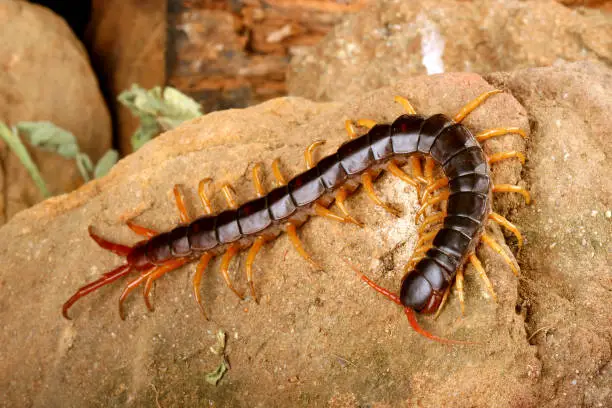
Hawaii’s giant centipedes are nightmare fuel. These venomous predators can grow over a foot long and deliver a bite that causes excruciating pain, swelling, and nausea. Residents tell tales of centipedes crawling into shoes and beds, waiting to strike unsuspecting victims. One unfortunate hiker was bitten while sitting on a log, turning a peaceful moment into a painful memory. In Hawaii, the tropical paradise has some truly terrifying residents.
Idaho – Bald-Faced Hornets
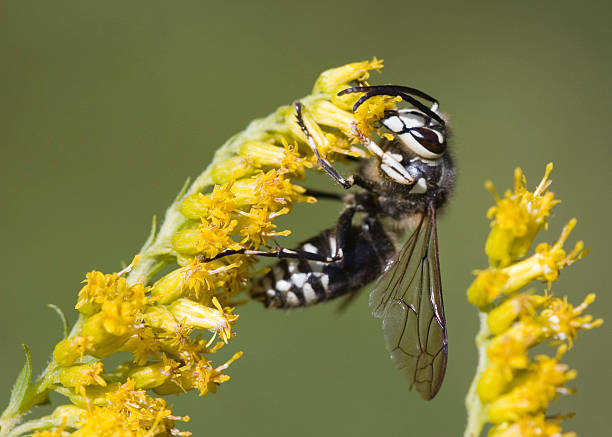
Idaho’s forests are home to bald-faced hornets, wasps known for their aggressive defense tactics. Their sting is excruciating, and they can attack in swarms if their aerial nests are disturbed. One Idaho camper accidentally brushed against a nest and was chased for nearly a quarter mile. Farmers often find these hornets lurking near crops, ready to defend their territory. In Idaho, the buzzing sound in the trees might just be your warning to back away—quickly.
Illinois – Japanese Beetles

Japanese beetles in Illinois are a gardener’s worst nightmare. These shiny, metallic-green pests swarm in the summer, devouring plants, crops, and trees. Entire fields have been reduced to skeletonized leaves in just days. Farmers report millions of dollars in losses annually due to these hungry invaders. While they don’t bite, their sheer numbers and destructive appetites make them a force to be reckoned with. In Illinois, it’s not the bite that gets you—it’s the munching madness.
Indiana – Brown Recluse Spiders
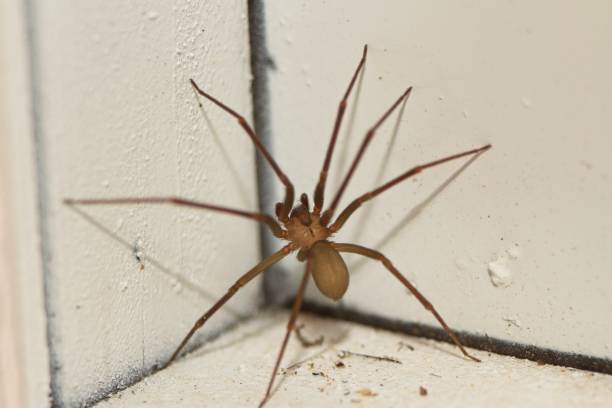
Indiana’s brown recluse spiders are silent stalkers, hiding in basements, closets, and even shoes. Their bites are necrotic, leading to festering wounds that can take months to heal. Victims often don’t notice the bite until it becomes a painful, open sore. One homeowner discovered dozens of recluses living in their attic, turning a simple cleanup into a horror story. In Indiana, danger doesn’t always have fangs—it might just be lurking in the shadows.
Iowa – Swarming Wasps
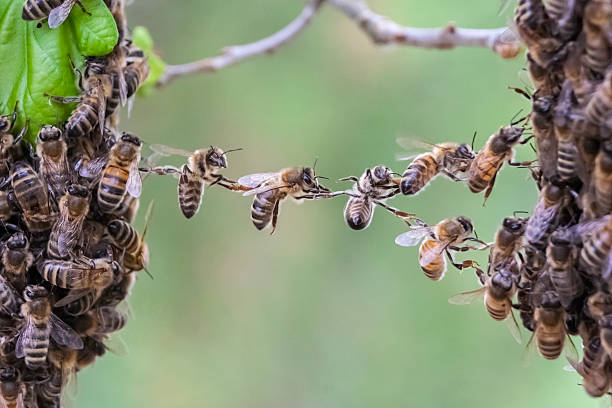
In Iowa, wasps take territorial defense to a new level. Disturbing a hidden nest can unleash an aerial attack that feels like a living nightmare. Their stings are painful, and their venom can cause severe allergic reactions in some unlucky victims. Farmers often encounter these aggressive insects while working in barns or fields. One Iowan described being chased across a pasture by a relentless swarm. In Iowa, even the quietest day can take a painful turn.
Kansas – Prairie Locusts
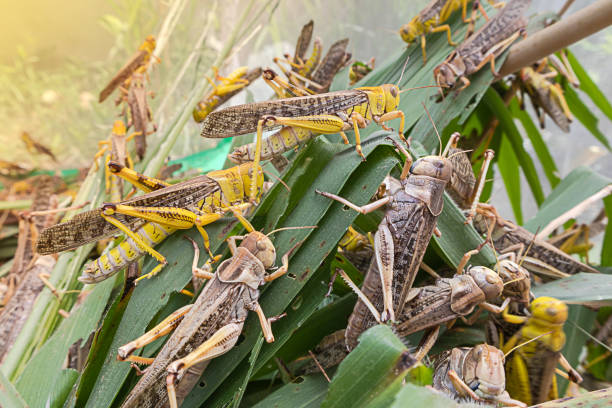
Kansas’s prairie locusts swarm in biblical proportions, leaving trails of destruction in their wake. These ravenous insects consume crops and gardens with alarming speed, devastating farms in outbreak years. During these swarms, their numbers are so overwhelming that they can block out the sun. Locals have compared the sound of their chewing to a roaring engine. In Kansas, the real danger doesn’t fly solo—it arrives in a cloud of chaos.
Kentucky – Black Widow Spiders

iStock
Kentucky’s black widows are infamous for their shiny black bodies and bright red hourglass markings. Found in barns, basements, and woodpiles, these spiders deliver a venomous bite that causes muscle spasms, nausea, and intense pain. Farmers often stumble upon these eight-legged nightmares while reaching into dark corners. One unlucky resident found a black widow nest under their porch, leading to an emergency extermination. In Kentucky, the most dangerous residents might already be in your shed.
Louisiana – Termite Swarms

In Louisiana, termites don’t just invade homes—they destroy them. Known as “silent destroyers,” these pests chew through wood, causing billions in damages annually. Residents have reported seeing massive swarms emerge during warm nights, turning their porches into insect battlegrounds. One homeowner discovered their dining room floor was entirely hollowed out. In Louisiana, the real danger isn’t in plain sight—it’s eating your house from the inside out.
Maine – Browntail Moth Caterpillars
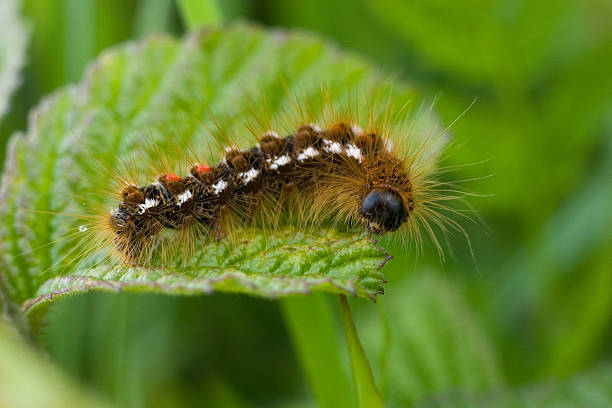
iStock
Maine’s Browntail Moth caterpillars are as dangerous as they are creepy. Their tiny, toxic hairs cause rashes, respiratory issues, and severe allergic reactions. During outbreaks, these caterpillars invade trees, homes, and gardens, leaving destruction and discomfort in their wake. One local described an infestation so bad they couldn’t step outside without itching for days. In Maine, the woods aren’t just itchy—they’re infested.
Maryland – Assassin Bugs

Wikimedia Commons
Maryland’s assassin bugs live up to their name, hunting their prey with deadly precision. While they primarily target other insects, their bite can cause searing pain, swelling, and allergic reactions in humans. Found in gardens and wooded areas, these bugs are known for injecting venom into their prey with their needle-like beaks. One gardener described finding dozens lurking among their tomato plants. In Maryland, it’s not just predators you fear—it’s the assassins in your backyard.
Massachusetts – Winter Ticks
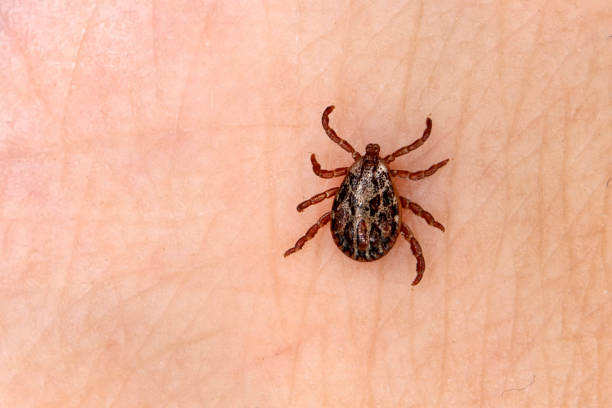
Massachusetts’s winter ticks are a growing threat, latching onto moose, deer, and humans alike. These parasites can form massive infestations, draining enough blood to weaken and kill their hosts. For hikers, their bites can leave itchy, painful welts, and in rare cases, spread diseases. One unlucky camper found over 50 ticks on their clothes after a single walk through tall grass. In Massachusetts, even winter can’t freeze out these bloodthirsty pests.
Michigan – Mosquitoes of Misery

Flickr
Michigan’s endless wetlands are a breeding ground for mosquitoes that thrive during the summer months. Known carriers of West Nile virus, these tiny vampires leave behind itchy bites that can become infected if scratched. Residents joke that bug spray is a summer necessity, but even that might not save you during peak season. One camper reported being swarmed by hundreds after forgetting to zip their tent. In Michigan, it’s not just the lakes that come alive in summer—it’s the mosquitoes, too.
Minnesota – Horseflies on the Attack
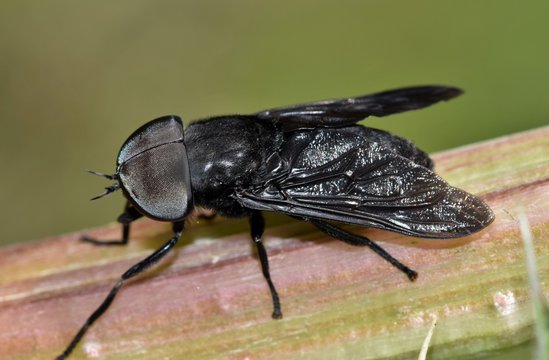
Adobe
Minnesota’s horseflies are larger and meaner than your average fly. These buzzing nightmares bite hard enough to draw blood, leaving swollen, painful welts that last for days. Found near lakes and wetlands, they zero in on exposed skin with relentless determination. Fishermen have shared horror stories of being driven off the water by these winged attackers. During peak summer, it’s nearly impossible to escape their constant buzzing. In Minnesota, even a peaceful day by the lake can turn into a battle with these airborne vampires.
Mississippi – Carpenter Ants

In Mississippi, carpenter ants are more than just a nuisance—they’re destructive invaders that hollow out beams, walls, and furniture. These wood-loving pests weaken structures without leaving a trace, often discovered only after significant damage is done. One homeowner described hearing eerie rustling sounds inside their walls, only to uncover an entire colony that had destroyed their porch. With their impressive jaws and insatiable appetite for wood, carpenter ants are a hidden threat. In Mississippi, your house might not just creak—it could be under attack from within.
Missouri – Lone Star Ticks
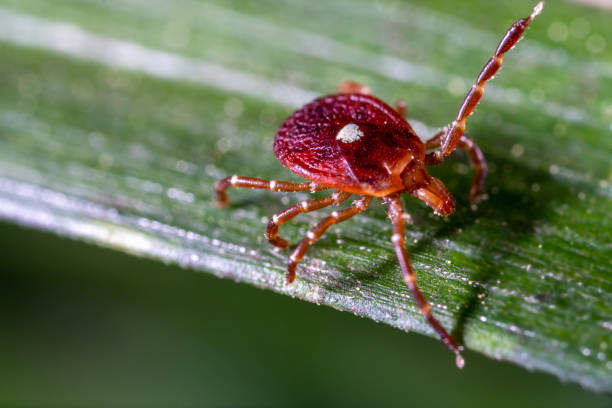
Missouri’s woods are crawling with lone star ticks, infamous for their bite that can cause a bizarre allergy to red meat. These tiny parasites latch onto humans and animals, leaving itchy bites that sometimes lead to severe reactions. Hunters and hikers often return from the outdoors covered in these stubborn pests, which are known for spreading other illnesses like ehrlichiosis. One unlucky camper swore off the wilderness after pulling dozens off their legs. In Missouri, even the smallest tick can change your diet forever.
Montana – Deer Flies
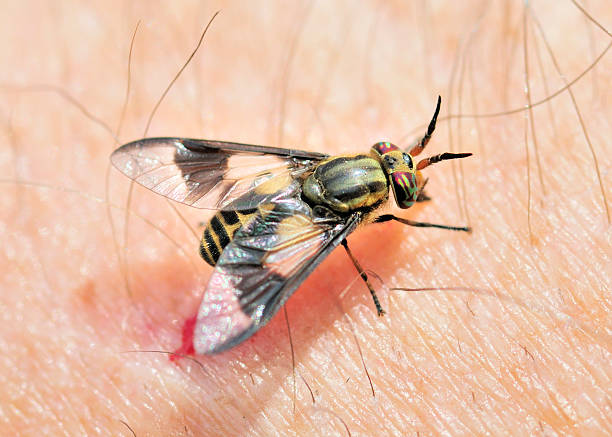
Montana’s deer flies are relentless hunters that thrive in the state’s pristine rivers and forests. Their bites, delivered with razor-sharp mouths, are so painful they’ve been compared to being stabbed with a needle. Drawn to movement and carbon dioxide, they swarm around hikers and fishermen, leaving itchy, swollen welts in their wake. One fisherman described these buzzing pests as “worse than mosquitoes and twice as stubborn.” In Montana, even the breathtaking views come with a price—and it bites back.
Nebraska – Grasshopper Invasions
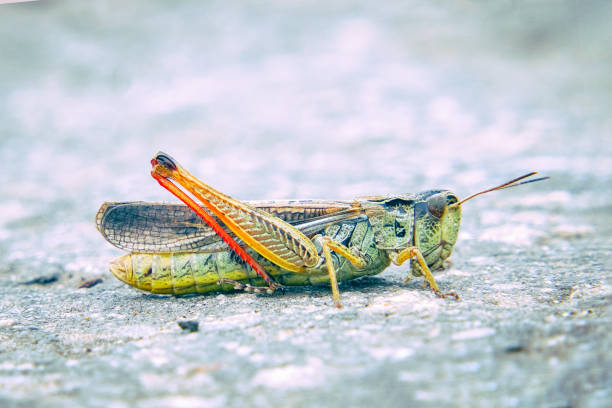
Nebraska’s open plains are prime territory for grasshopper swarms, which can strip entire fields bare in days. These voracious insects devour crops, leaving farmers with devastating losses during outbreak years. Their numbers grow so large that locals have reported seeing clouds of grasshoppers that darken the sky. One farmer described the sound of their crunching as “like walking on potato chips.” In Nebraska, it’s not the storms you fear—it’s the plagues.
Nevada – Desert Recluse Spiders

Nevada’s deserts are home to the elusive desert recluse spider, a cousin of the infamous brown recluse. Their venom causes necrotic wounds that can take months to heal, leaving behind painful scars. These spiders hide in woodpiles, garages, and even shoes, making every step a gamble. One resident found a recluse lurking inside their motorcycle helmet—a close call that still haunts them. In Nevada, it’s not just the heat that’s dangerous—it’s what’s hiding in the shadows.
New Hampshire – Black Flies
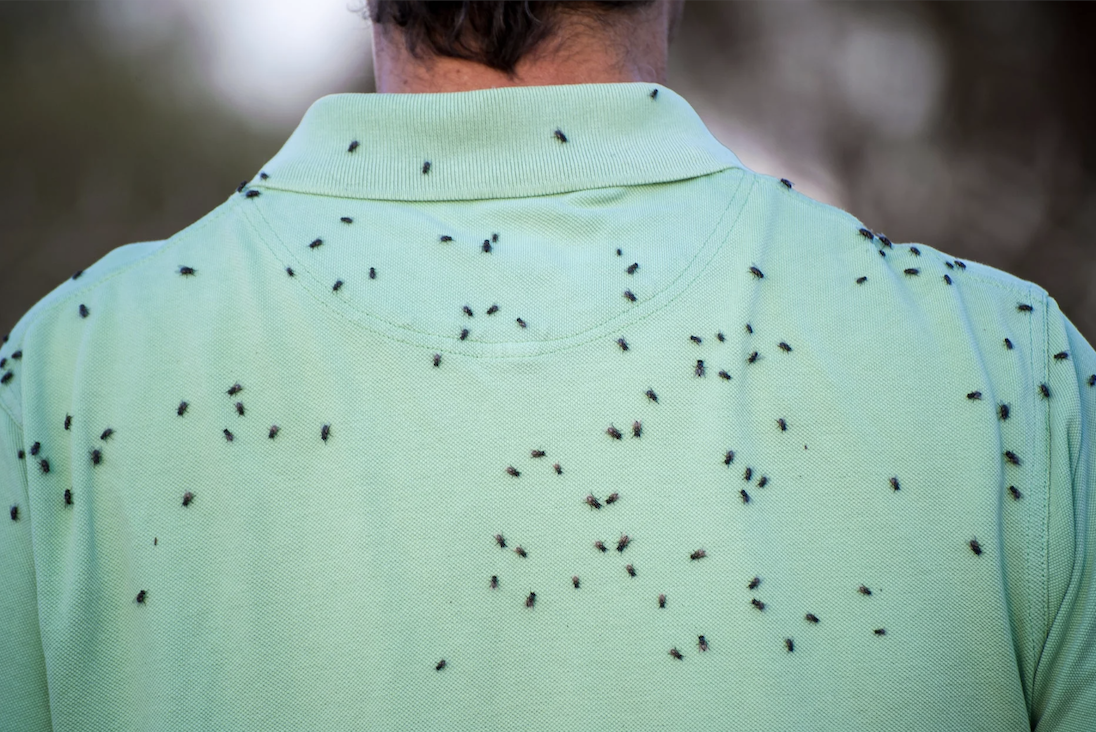
Shutterstock
New Hampshire’s black flies may be small, but their bite is far worse than their size suggests. These swarming insects attack in spring and summer, leaving itchy, swollen welts on their victims. Farmers and hikers have reported clouds of black flies so thick they can drive people indoors. Their bites are more painful than mosquitoes and can lead to infections if scratched. One local described being “eaten alive” during a short walk outside. In New Hampshire, even the woods buzz with danger.
New Jersey – Spotted Lanternflies
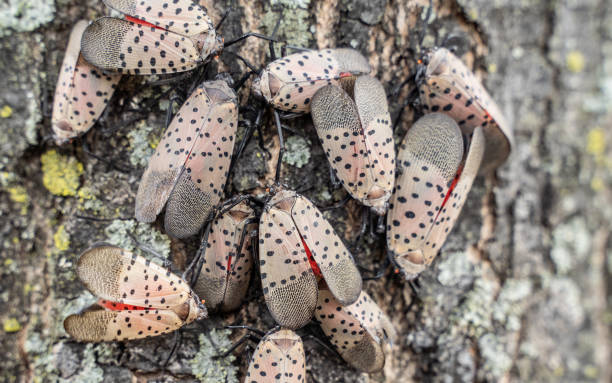
New Jersey is under siege by spotted lanternflies, invasive insects that devastate plants and crops. These brightly colored pests suck the sap from trees, leaving them weakened and vulnerable to disease. Residents report finding hundreds of these bugs covering cars, fences, and backyards, often swarming like a living carpet. While they don’t bite humans, their sheer numbers and destructive habits are enough to send shivers down your spine. In New Jersey, the invasion is real, and it’s not stopping anytime soon.
New Mexico – Tarantula Hawks
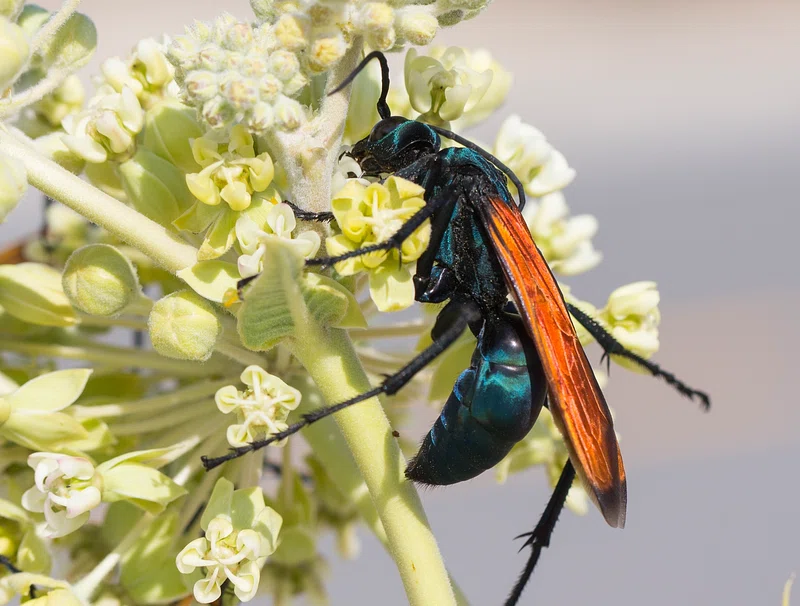
New Mexico’s tarantula hawks are fearsome wasps with a sting so painful it’s ranked among the worst in the insect world. These giant metallic-blue wasps hunt tarantulas, paralyzing them with venom before dragging them to their nests as food for their larvae. While their sting isn’t deadly to humans, the excruciating pain can leave victims immobilized for hours. One hiker described the sting as “pure agony.” In New Mexico, even the wasps have a flair for the dramatic—and the deadly.
New York – German Cockroaches
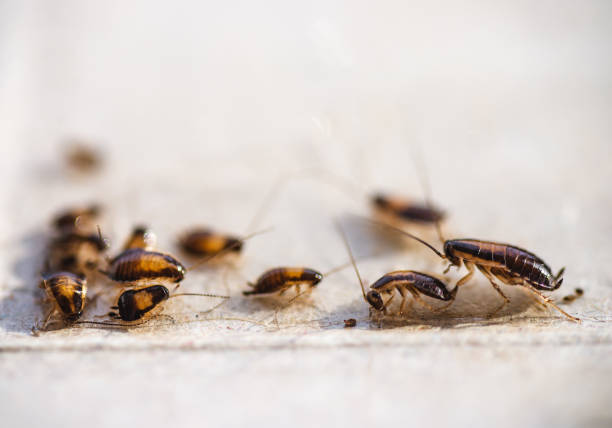
New York’s urban areas are plagued by German cockroaches, infamous for spreading bacteria and triggering allergies. These fast-moving invaders infest homes, restaurants, and subway stations, multiplying at alarming rates. One unlucky tenant reported seeing hundreds scatter when they turned on their kitchen light. Cockroach infestations are nearly impossible to eliminate without professional help, as these pests thrive in the city’s infrastructure. In New York, the “city that never sleeps” includes its uninvited six-legged residents.
North Carolina – Paper Wasps

North Carolina’s paper wasps are territorial defenders with a sting that packs a punch. Their umbrella-shaped nests often appear on porches, windows, or sheds, making close encounters common. One hiker was stung five times after accidentally brushing against a hidden nest. Their venom isn’t deadly, but the pain and swelling are enough to ruin your day. Locals joke that outdoor activities during wasp season require constant vigilance. In North Carolina, the buzz in the air might mean it’s time to back away.
North Dakota – Grain Weevils
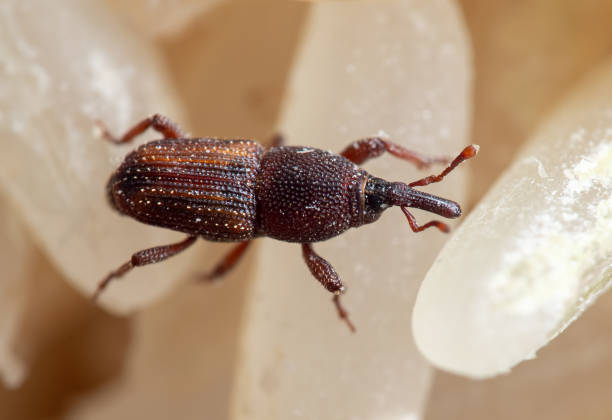
North Dakota’s grain weevils are a nightmare for farmers. These tiny beetles infest stored grain, devouring it from the inside out. Entire silos have been lost to their relentless appetite, costing farmers millions. One farmer discovered a single bag of infested grain had spread to their entire crop. These invaders reproduce quickly, making infestations hard to control. In North Dakota, the smallest pests can cause the biggest problems, turning valuable harvests into dust.
Ohio – House Centipedes
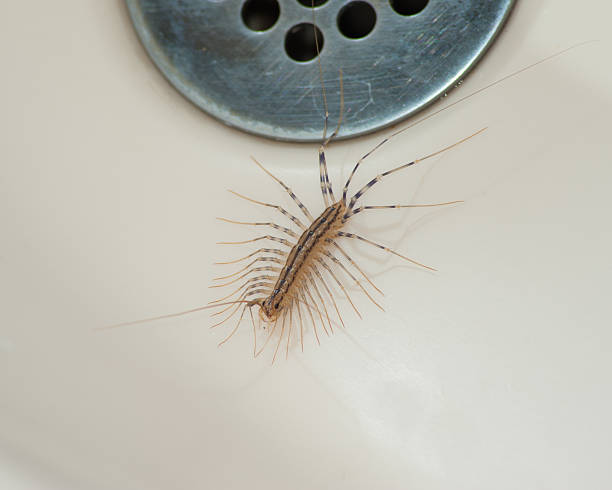
Ohio’s house centipedes are creepy critters that invade homes and send shivers down spines. With dozens of long, spindly legs, these insects move with alarming speed and often dart out of drains or crawlspaces. While they’re not dangerous to humans, their sudden appearances can induce panic. One Ohioan recalls finding a centipede on their pillow—an image they’ll never forget. In Ohio, the fear is real, even if the bite isn’t.
Oklahoma – Bed Bugs
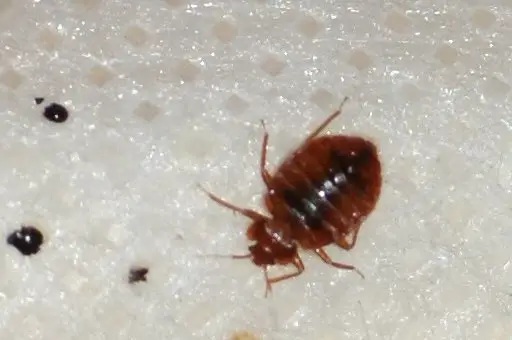
Oklahoma’s hotels and homes are hotspots for bed bugs, infamous for their stealthy nocturnal attacks. These tiny, blood-sucking insects leave behind itchy, red welts and psychological discomfort for their victims. Bed bug infestations can spread quickly, and one family in Tulsa reportedly threw out every piece of furniture after discovering a hidden colony. They hide in mattresses, carpets, and even behind wallpaper. In Oklahoma, a peaceful night’s sleep can quickly become a sleepless, scratching nightmare.
Oregon – Yellow Sac Spiders
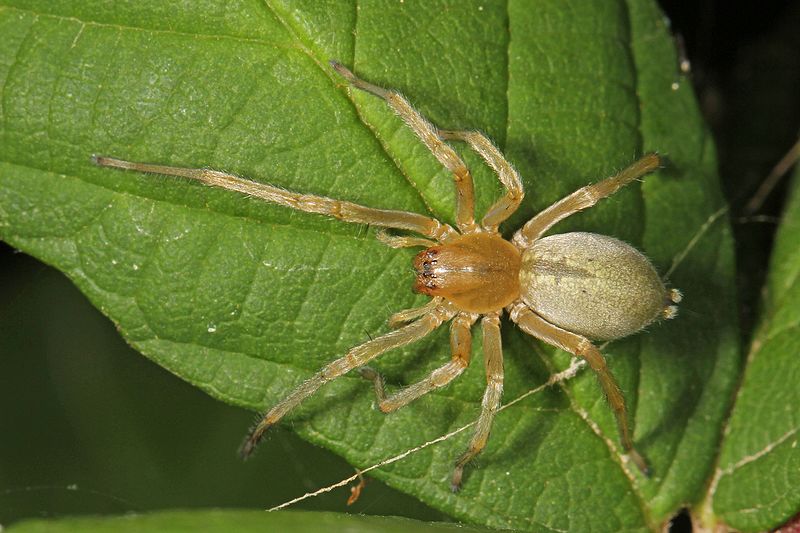
Oregon is home to yellow sac spiders, notorious for their painful bites and preference for hiding in dark, undisturbed places. These small, pale spiders are often found in homes, lurking in bedding, curtains, and closets. Their venom isn’t deadly, but it causes burning pain and itchy, red welts. One Portland resident reported finding dozens of sacs attached to their garage walls. In Oregon, it’s not just the outdoors you need to watch—it’s what’s already inside.
Pennsylvania – Stink Bugs

Pennsylvania’s stink bugs are more than a smelly nuisance—they invade homes in massive numbers during the colder months. Originally from Asia, these shield-shaped pests emit a foul odor when squished, making them particularly unpleasant to deal with. Residents have reported infestations so severe that entire rooms were covered in stink bugs. They may not bite, but their overwhelming presence can drive you mad. In Pennsylvania, these bugs are an unwelcome seasonal tradition.
Rhode Island – Mosquitoes
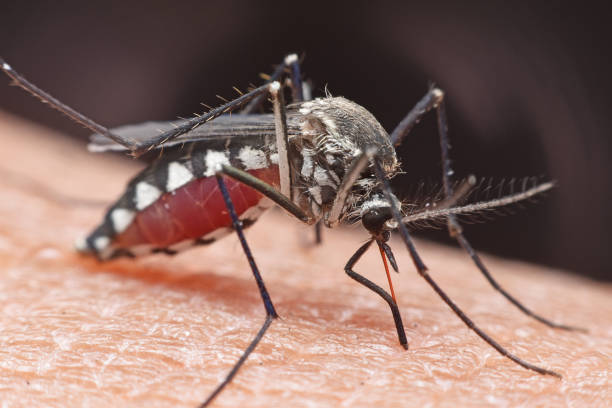
Despite its small size, Rhode Island has a big problem with mosquitoes. Known carriers of West Nile virus and Eastern equine encephalitis, these bloodsuckers thrive in the state’s wetlands and wooded areas. During peak summer, residents joke about mosquitoes being the unofficial state bird. One unlucky camper described being covered in bites within minutes of stepping outside. In Rhode Island, bug spray is a necessity, not a luxury.
South Carolina – Fire Ants

South Carolina’s red fire ants are aggressive invaders with a sting that feels like burning needles. These pests build massive underground colonies, and stepping on one means an immediate swarm attack. Their venom can cause allergic reactions, and in some cases, victims require hospitalization. Farmers and hikers frequently encounter these tiny terrors, with one local recalling a painful encounter that left their entire leg swollen. In South Carolina, the ground beneath your feet is anything but safe.
South Dakota – Blister Beetles

Wikipedia
Blister beetles in South Dakota are tiny but pack a painful punch. These insects secrete a toxic substance called cantharidin, which causes blisters on human skin and can be fatal to livestock if ingested. Farmers have reported fields infested with these beetles, leading to damaged crops and worried livestock owners. One rancher described a horse falling ill after accidentally eating hay contaminated with beetles. In South Dakota, these small invaders leave a big mark.
Tennessee – Chiggers

Tennessee’s chiggers are microscopic mites that live in tall grass and wooded areas, ready to latch onto unsuspecting hikers. Their bites cause intense itching, and the red welts they leave behind can last for weeks. One unlucky camper described being “eaten alive” after sitting on a log without protection. Chiggers are nearly invisible to the naked eye, making them all the more unsettling. In Tennessee, the itch might last long after the hike is over.
Texas – Kissing Bugs

Texas is home to kissing bugs, and bloodsucking insects that can spread Chagas disease, a potentially fatal illness. These creepy crawlers feed on humans while they sleep, often biting near the lips—hence their unsettling name. One resident discovered a kissing bug infestation in their barn, sending the whole family scrambling for pest control. Their bites often go unnoticed until it’s too late. In Texas, even a goodnight kiss could come with a deadly surprise.
Utah – Mormon Crickets’
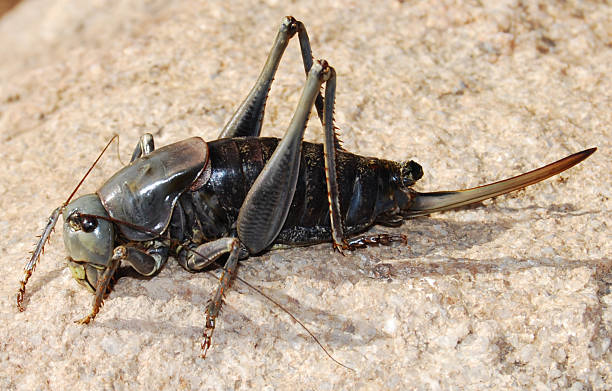
Utah’s Mormon crickets are infamous for their swarming behavior, devouring crops and overwhelming roads in biblical proportions. Despite their name, these insects aren’t true crickets, but their sheer numbers and appetite make them devastating to farmers. Locals have reported swarms so thick they created traffic hazards, with cars sliding on the crushed bodies. In Utah, the sound of crunching might not be leaves—it could be an insect invasion.
Vermont – Cluster Flies
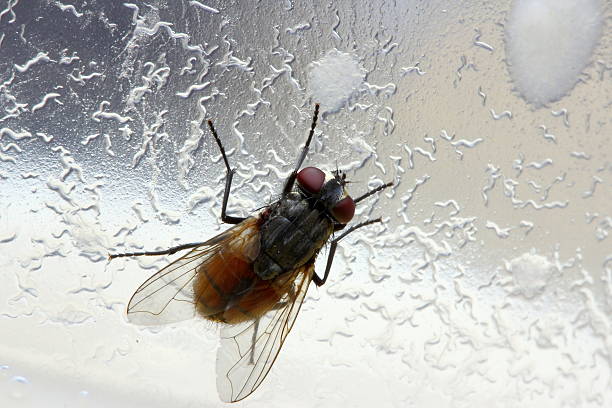
Cluster flies in Vermont are harmless but maddening. These slow-moving insects invade homes in the fall, seeking warmth to survive the winter. Once inside, they gather in windows, walls, and attics, buzzing incessantly. One Vermont resident described finding hundreds of cluster flies trapped between their window panes. While they don’t bite, their overwhelming numbers and constant buzzing make them a pest worth avoiding. In Vermont, the real winter invaders are already inside.
Virginia – Wheel Bugs

Flickr
Virginia’s wheel bugs are creepy-looking predators with a painful bite. These large insects, named for the spiny wheel-like structures on their backs, inject venom that causes burning pain and swelling. Gardeners often encounter them while working among flowers or vegetables, only to regret disturbing them. Their unusual appearance and aggressive nature make them a memorable (and painful) nuisance. In Virginia, it’s the bugs with wheels that sting the most.
Washington – Bald-Faced Hornets

Washington’s bald-faced hornets are aggressive defenders of their aerial nests. Known for their black-and-white coloring and painful sting, they attack in swarms if their nest is disturbed. One unlucky hiker stumbled upon a nest and was chased for nearly half a mile by angry hornets. Their sting can cause severe swelling and, for some, life-threatening allergic reactions. In Washington, the buzzing in the trees might be your warning to steer clear.
West Virginia – Cave Crickets
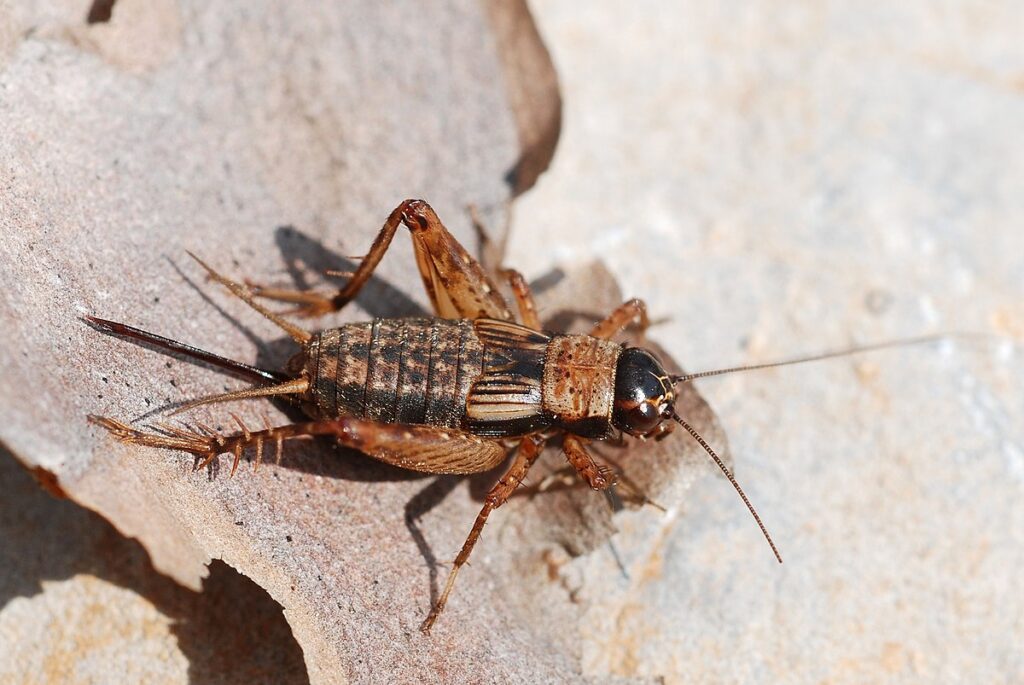
Wikipedia
West Virginia’s caves and basements are home to cave crickets, also known as “spider crickets” due to their long, spindly legs. These harmless insects leap when startled, often jumping directly at people. One West Virginian described finding a swarm of these creepy critters in their basement, turning a simple cleanup into a nightmare. While they don’t bite, their sudden jumps and eerie appearance are enough to make anyone squirm.
Wisconsin – Asian Lady Beetles
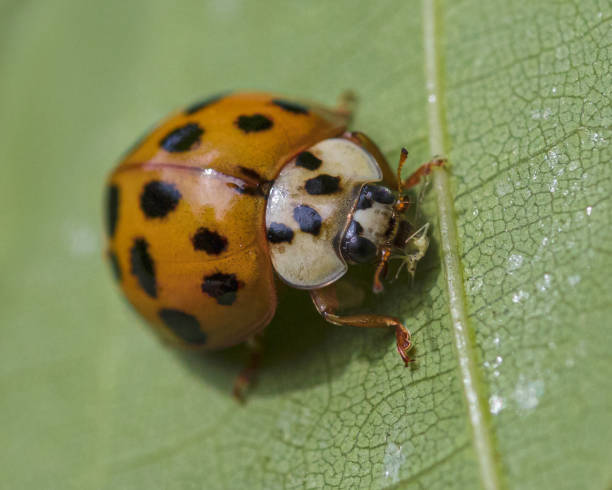
Wisconsin’s Asian lady beetles may look cute, but they’re an invasive menace. These beetles swarm homes in the fall, squeezing through cracks and crevices to find shelter. Their bites are mild but surprising, and they emit a foul-smelling liquid when threatened. Residents have reported infestations so severe their walls seemed alive with movement. In Wisconsin, even ladybugs come with a sinister twist.
Wyoming – Cluster Caterpillars
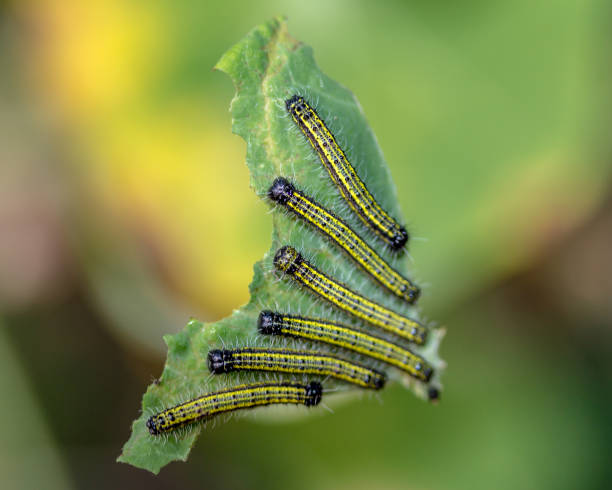
Wyoming’s rangelands are occasionally overrun by cluster caterpillars, whose massive swarms can strip entire fields bare. These fuzzy invaders move en masse, leaving devastation in their wake. Farmers have shared stories of caterpillar trails so dense they resembled rivers of fur. While they don’t bite, their sheer numbers and appetite make them a nightmare for crops and gardens. In Wyoming, the invasion is slow-moving but unstoppable.
Washington, D.C. – Cockroaches

The urban landscape of Washington, D.C., is plagued by cockroaches, infamous for their resilience and rapid reproduction. These fast-moving pests spread bacteria, contaminate food, and trigger asthma in sensitive individuals. Residents often spot them scurrying across sidewalks or infesting kitchens at night. One family in D.C. found their apartment overrun after leaving crumbs out for just one evening. In the nation’s capital, even the pests are persistent.
From stinging wasps in North Carolina to biting bed bugs in Oklahoma, every state has its own creepy-crawly nightmares. Whether it’s swarming locusts or lurking spiders, these insects prove that nature always has the upper hand. So next time you venture outside—or even stay in—remember, the bugs might already be closer than you think. Sleep tight—and


